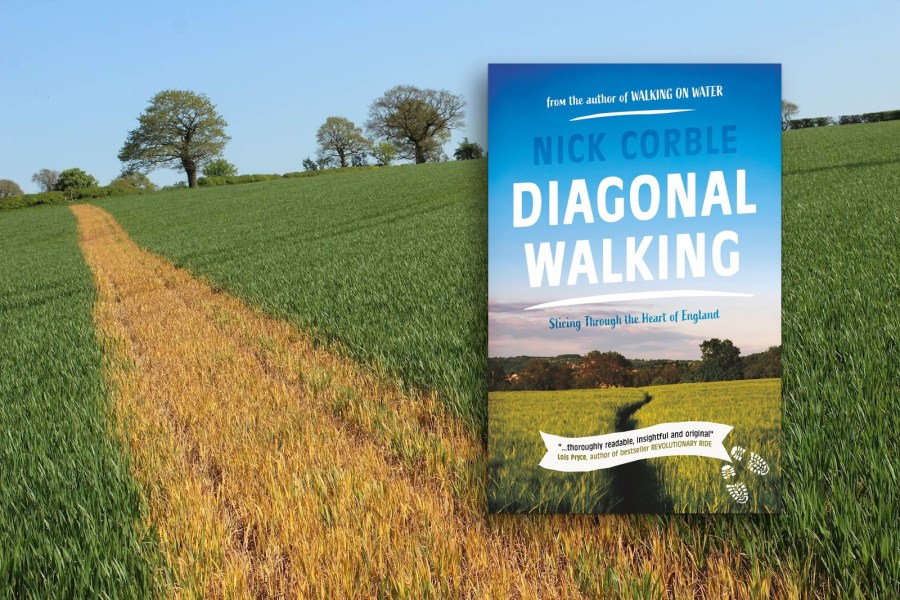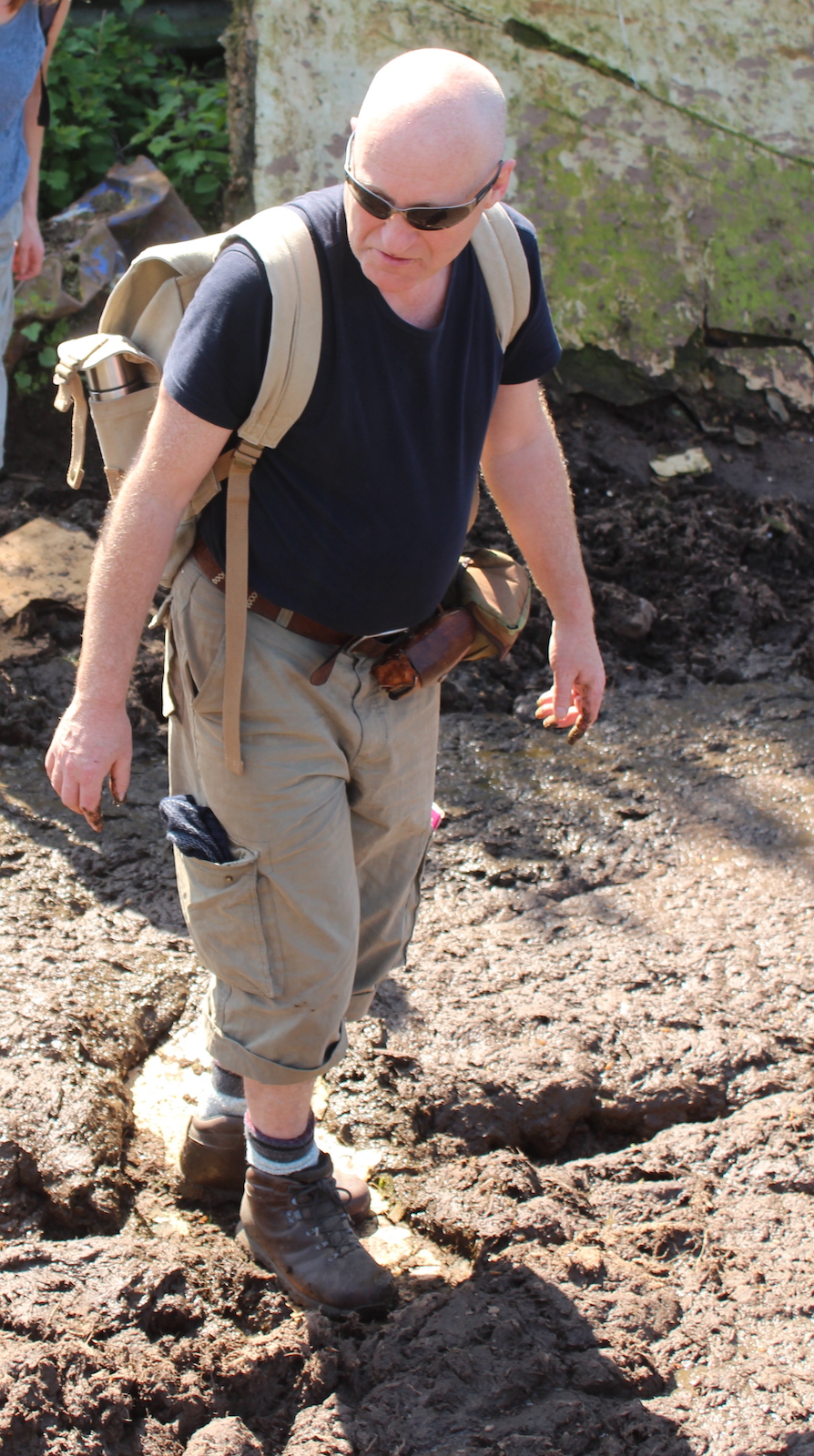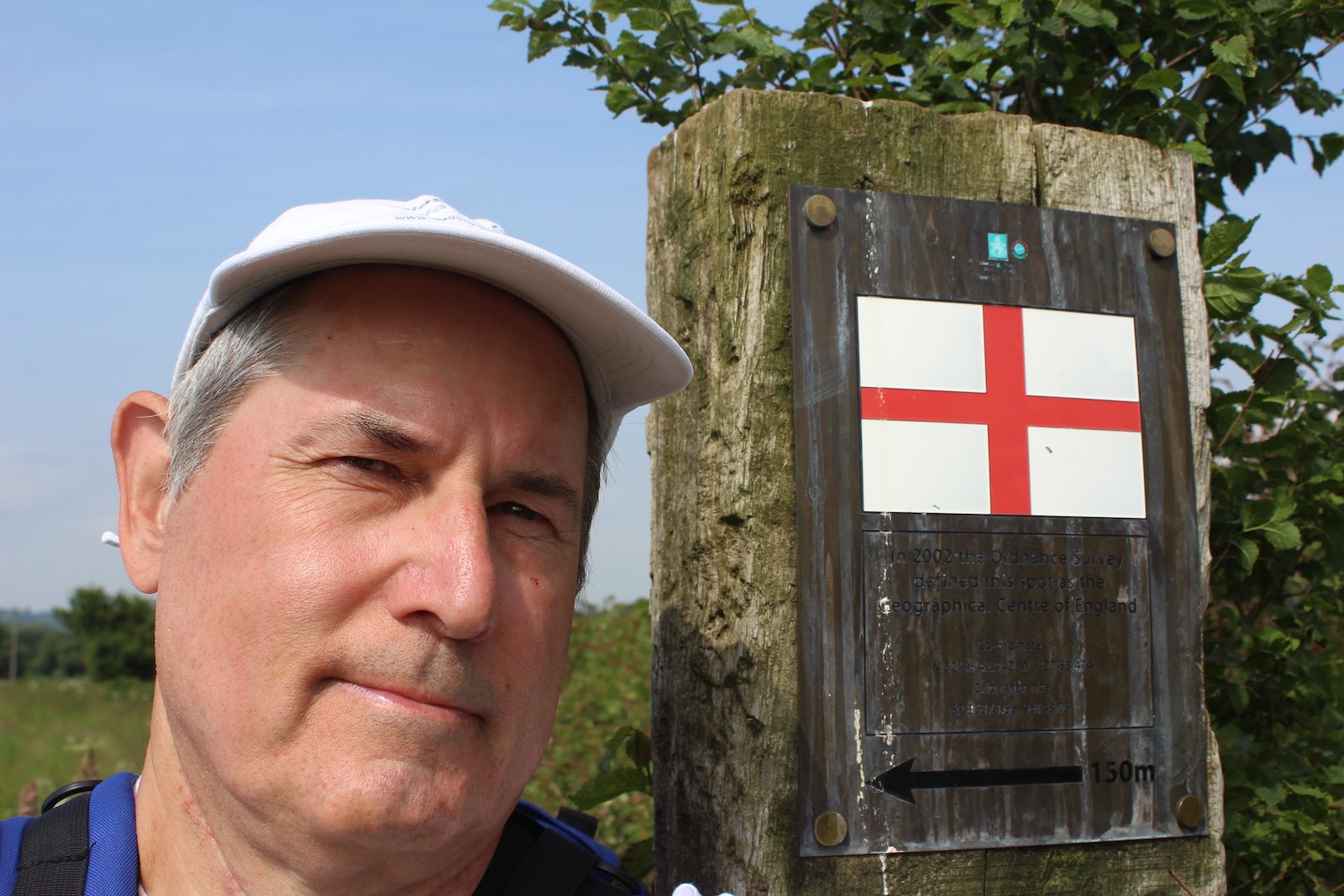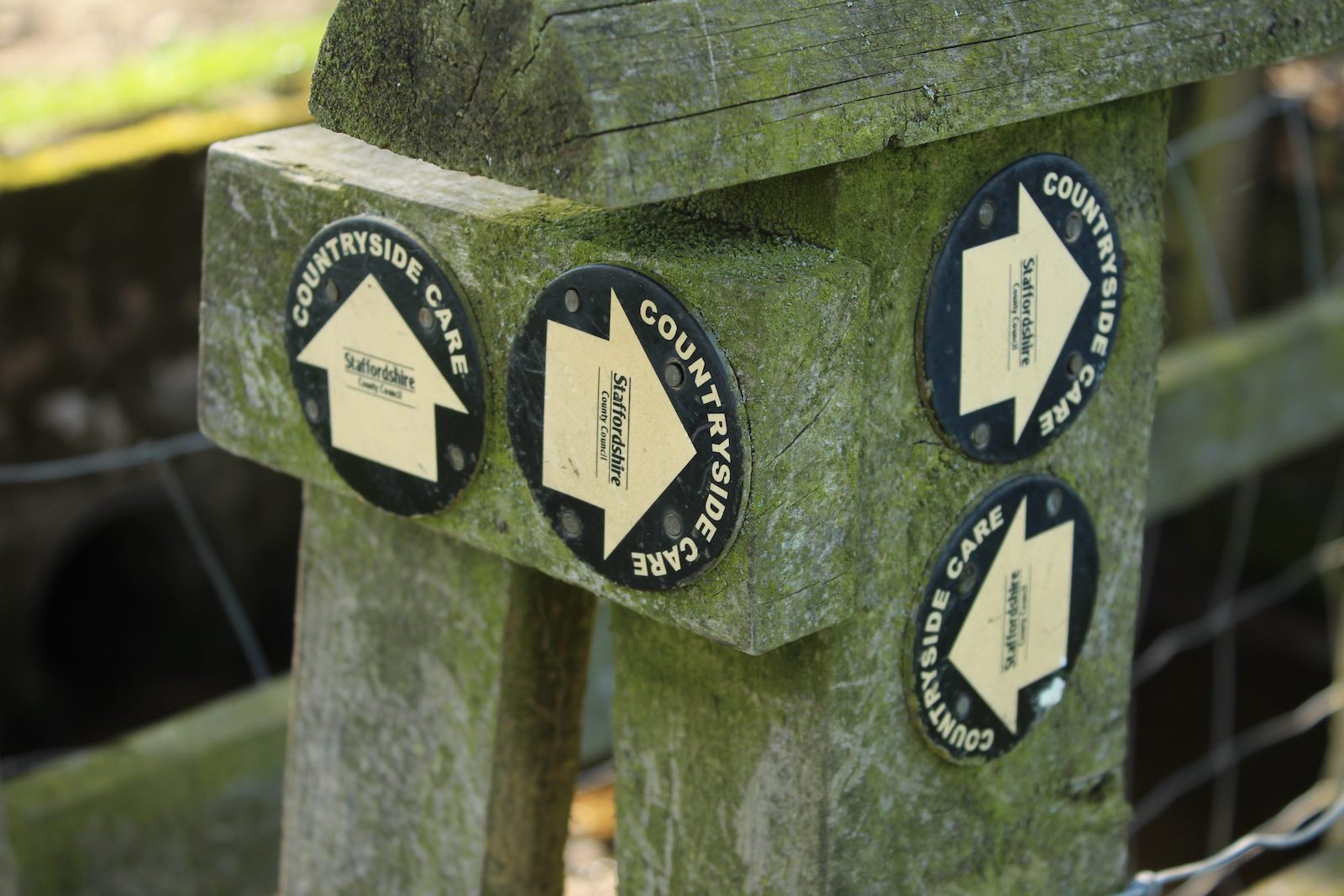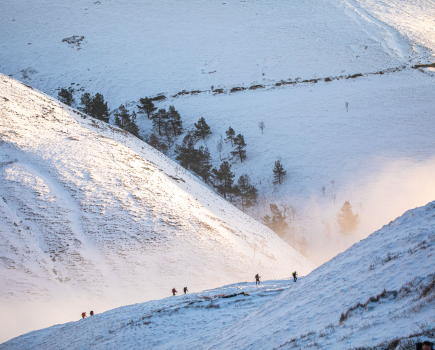Nick Corble finds the footpaths of Staffordshire a challenge in this humorous extract from his new book, Diagonal Walking
This time last year, Nick Corble was just setting out on a walk across England. Not just any old walk, but a diagonal walk: a unique long-distance trek cut at 45 degrees through the very centre of England using only public footpaths. He was motivated by personal challenge and to see if the route was possible, but there was more to it than that. Just an ordinary man, as confused as everyone else, he wanted to get his own take on the state of the nation as it stood on the brink of massive change.
What he didn’t know was he was about to experience extremes of weather, and politics, unseen for a generation. His book about the walk, Diagonal Walking, reveals what he found out: about himself, and about his country. Having started north of Liverpool and passed through Cheshire, we join Nick in Staffordshire for the walk’s first prolonged stretch of rural walking, and things aren’t going quite to plan…
By Nick Corble
‘Tear that bit of cardboard off. It’s rotten anyway.’
A couple of minutes before, I’d recklessly walked right through a pool of cow cack wide enough to require four stretching strides and deep enough to go over the tops of my boots. I’d made it to the gate, but that was only a staging post to our ultimate destination of the field beyond. An equally wide expanse of bubbling manure still lay before us, and I was reconnoitring the scene before me to see if there was a drier route out.
Meanwhile, my companions for the day, my cousin Simon and his wife Judy, were yet to even reach the gate, and Simon was stranded halfway. He’d found a wide strip of cardboard by the side of the pool and placed it, like a giant snow shoe, one pace out in an effort to provide a temporary stepping stone. He was stranded, and needed more material. All I had in front of me was a railway sleeper, and as well as not really relishing picking it up, the thought of the collateral damage it could do if I tossed it in his direction wasn’t worth contemplating.
Meanwhile, Judy was casting around for anything her side of the poo she might be able to use, watched by a gathering herd of young brown and white heifers, the source of the problem, if you discounted the farmer who hadn’t kept the footpath clear. No gate or fence separated Judy from the cows, and any sudden decision by them to nudge forward a bit would prove disastrous. Stoic and defiant, Judy tore more cardboard off the old hoarding by the side of the hedge and handed it gently towards the outstretched hand of her husband. He, in turn, plopped it in front of him and took another dainty step, the green and brown sludge oozing out around the edges. Like someone in a corporate team- building exercise, he had shown his initiative. I stayed stuck on the gate, oblivious to Simon’s suggestion that I could swing out and collect him. I didn’t trust the gate’s hinges, and besides, I didn’t want to freak out the cows. Eventually, Simon made it, and Judy was able to follow on using his stepping stones.
With the three of us now committed to further progress, islands in a sea of crap, Judy explored the option of going up the side of the hedge to our right, while Simon and I contemplated a more complicated, but manly, route via some farm machinery. The railway sleeper was not mentioned again. Just then, the steady chug-chug of a tractor in the nearby farmyard stopped, and an angry farmer started yelling at us that the footpath was via the hedge. Simon’s diplomatic responses, thanking him for the advice, were admirable in the circumstances, and I wondered how I might have responded if I’d been on my own.
The day had started pleasantly enough, with two more people to add to my now growing list of those who’d ‘walked with me’ along the diagonal. They had been early volunteers, but by this stage they may possibly have been regretting their offer. We’d met just south of Stoke and proceeded along the Trent and Mersey canal for three miles, generally catching up and talking about this and that. We’d already passed a reed-lined pond with a family of swans and come across a newt haven, so, initially at least, my new companions, both nature-lovers, were happy.
We’d also passed by the Wedgwood complex in Barlaston outside Stoke. With a refurbished museum and factory tour, this is now as much a visitor attraction as a true manufacturing plant. Most of the company’s wares is now produced in China. An iconic British brand, Wedgwood’ story is more international. After initially merging with the Irish firm Waterford, the joint company was bought up by a New York-based equity firm when it went into administration in 2009. Six years later, the new owners sold it on to a Finnish consumer goods company.
“Simon reflected how when he’d taken some New Zealand friends walking they were amazed that we were able to just walk across a farmer’s field. I was reminded of how lucky we were to have our network of footpaths, something that made the entire Diagonal Walking enterprise possible”
Back at our gate, we eventually made it back to terra firma and continued our walk, looking out over ploughed fields of the distinctive red soil that presumably reflects the quantity of clay within it. Our path took us gently uphill, and briefly along a road, where a strange sign indicated we were outside a farm with a name that came across more as Stalinist Five-Year Plan than the more traditional ‘Green Acres’ or ‘Manor Farm’. The ever-informative Simon remembered that this reflected Staffordshire County Council’s policy of owning farms to let to start-up farmers, an admirable idea they spoiled a little by giving them names such as ‘Holding Number X on Estate Y (Z).’
We were approaching Barlaston Common outside Meir Heath, where my eagle eyes spotted a shortcut across the common that would lead us to a pub. The day had turned out to be hot again, and a pint was suddenly a very good idea. As we approached the gate to the common, however, we spotted a problem. The path on the other side was distinctly churned up, and as we were now wary of anything brown and liquid, and our boots had by then dried out sufficiently to form a thick crust, we hesitated.
At that point a half-naked man – well, stripped to his waist anyway – appeared, a cacophony of barking dogs in his wake. He was yelling at us, and first thoughts returned to the belligerent farmer earlier, which just goes to show you shouldn’t rely on first impressions. He was, in fact, sympathetic to our plight, bemoaning the recent practice of allowing cows to graze the common. Cattle had been reintroduced a decade before on the basis that grazing would stop the common, mainly marshy grassland, being invaded by scrub. No one had spotted the equation that heavy cows plus wet ground equals mud.
Our new friend duly invited us to walk through his field and onto a more convivial section of the common, from which we could make our way to the pub. He did issue a warning however: ‘It’s gone right downhill recently.’ When we got there, the pub, The Swynnerton Arms, was just what we needed, friendly and with good facilities and an outside seating area. More of a gastropub than a locals’ pub, we agreed that our recent friend’s definition of going downhill was different from ours.
Suitably refreshed, and with a podcast recorded, we made our way through Meir Heath, past its windmill and on through fields to Fulford. Along the way, Simon reflected how when he’d taken some New Zealand friends walking they were amazed that we were able to just walk across a farmer’s field. I was reminded of how lucky we were to have our network of footpaths, something that made the entire Diagonal Walking enterprise possible. Coming in a number of different guises, from footpaths through permissive paths, byways and public rights of way to bridleways, 140,000 miles of such paths criss-cross England and Wales, according to an estimate by The Ramblers. And that excludes the 10 per cent of such paths not shown on OS and other definitive maps. Many of the paths are thousands of years old and may represent old drovers routes, or simply how people used to get from A to B in an age before cars, or indeed an age when owning a horse or a donkey was a luxury. These rights of way are one of the country’s largely unsung assets, especially valuable when there is an imperative for people to exercise more.
It was a shame, therefore, that, if my experience of two days of rural walking in Staffordshire was anything to go by, they were under-appreciated, under-loved and under-maintained. In this county anyway. Actually, it was more than a shame: it was downright dumb. If a footpath is ill-defined, then the walker has no option but to trample wherever they can to find their route, which is in neither their interest nor that of the local landowner. At times it felt as if a policy of benign neglect was, in fact, deliberate. No paths, no walkers, means no need for paths. If this was how things were going to be for the rest of the walk, I was in trouble.
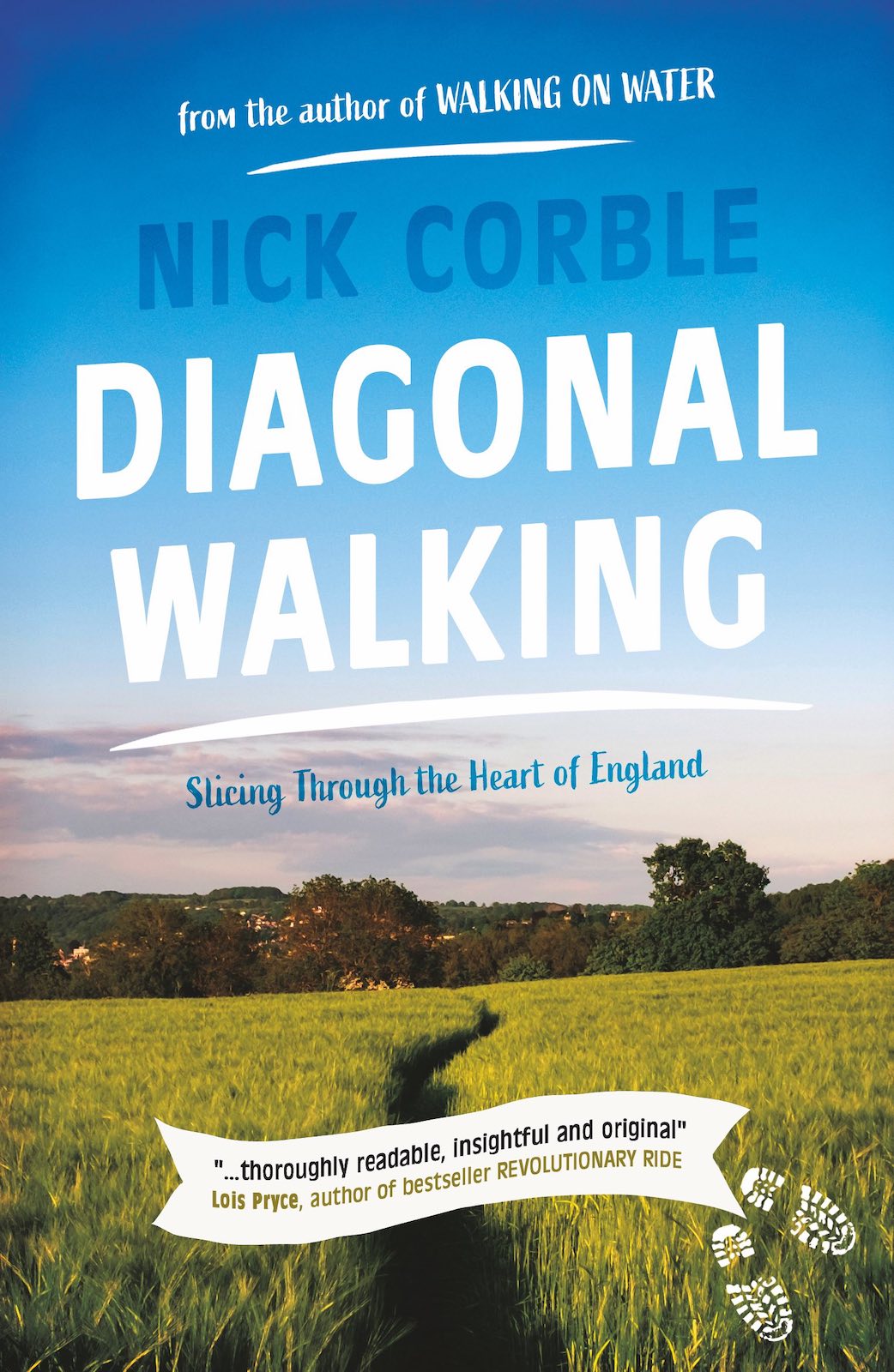 Staffordshire proved to be a challenge, but things picked up as soon as Nick crossed the county line into Warwickshire. What followed was what one reviewer has called ”a thoroughly enjoyable walk through the middle of Middle England” and beyond, through the Home Counties, across the NE edge of London and down into darkest Kent.
Staffordshire proved to be a challenge, but things picked up as soon as Nick crossed the county line into Warwickshire. What followed was what one reviewer has called ”a thoroughly enjoyable walk through the middle of Middle England” and beyond, through the Home Counties, across the NE edge of London and down into darkest Kent.
Along this alternative coast-to-coast, Nick came across angry cows, clever sheep, disgruntled farmers and iron men. He also learned a lot about where England sits, two decades into the 21st century.
TGO readers can now get their hands on the book at the discounted price of £9.99 incl. UK p&p (RRP £12.99) simply by visiting www.diagonalwalking.co.uk/tgo, where you can also find out a lot more about Nick’s journey.

